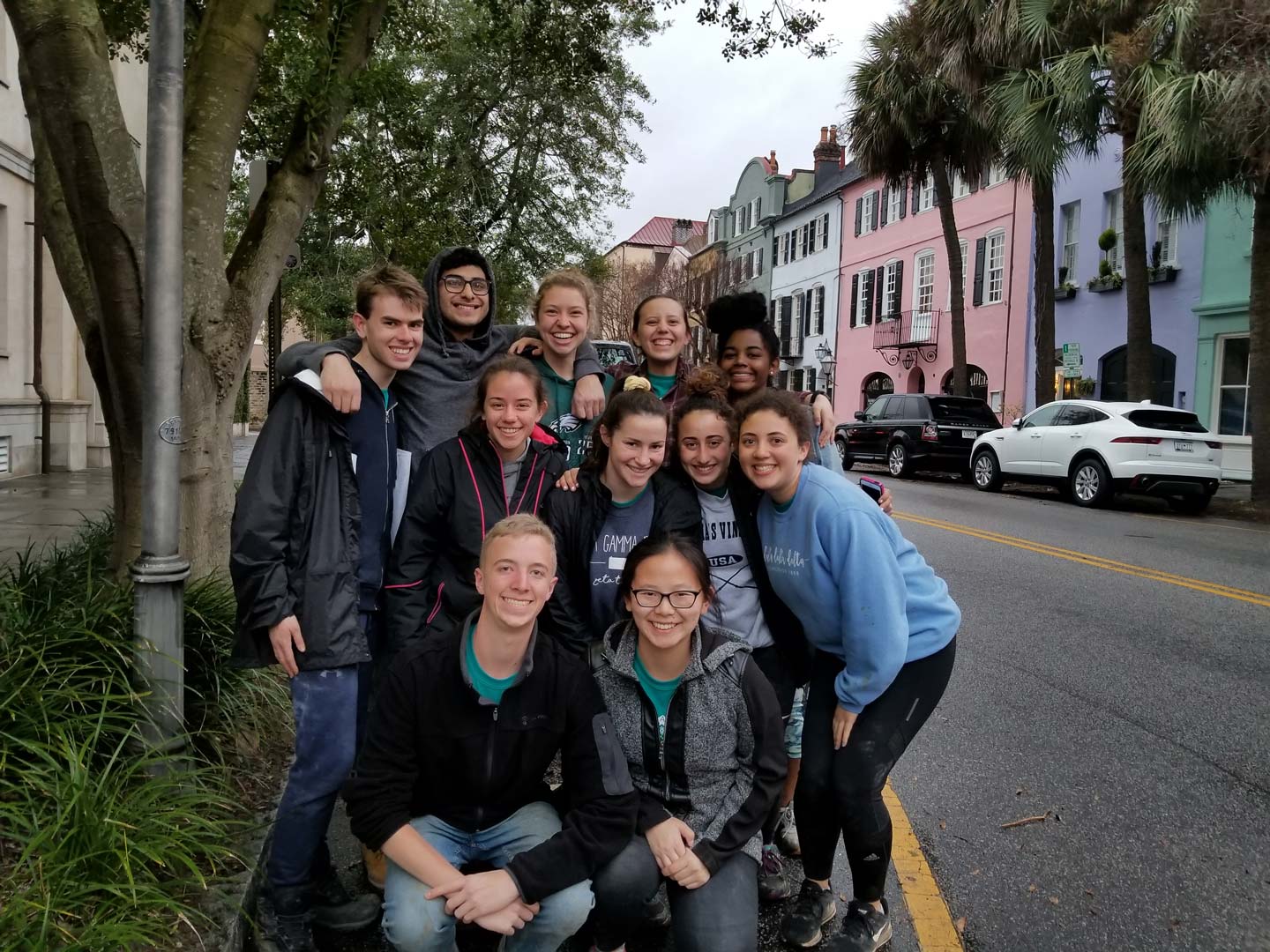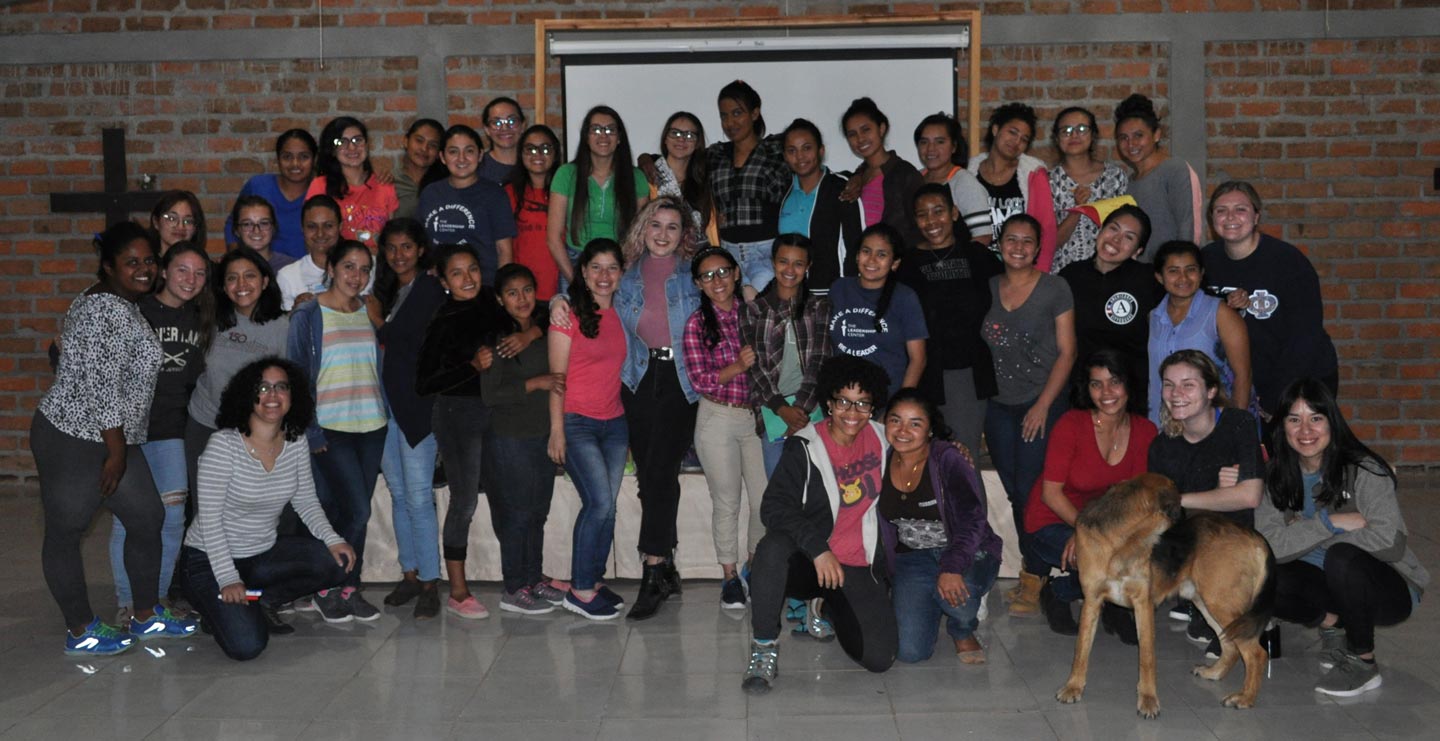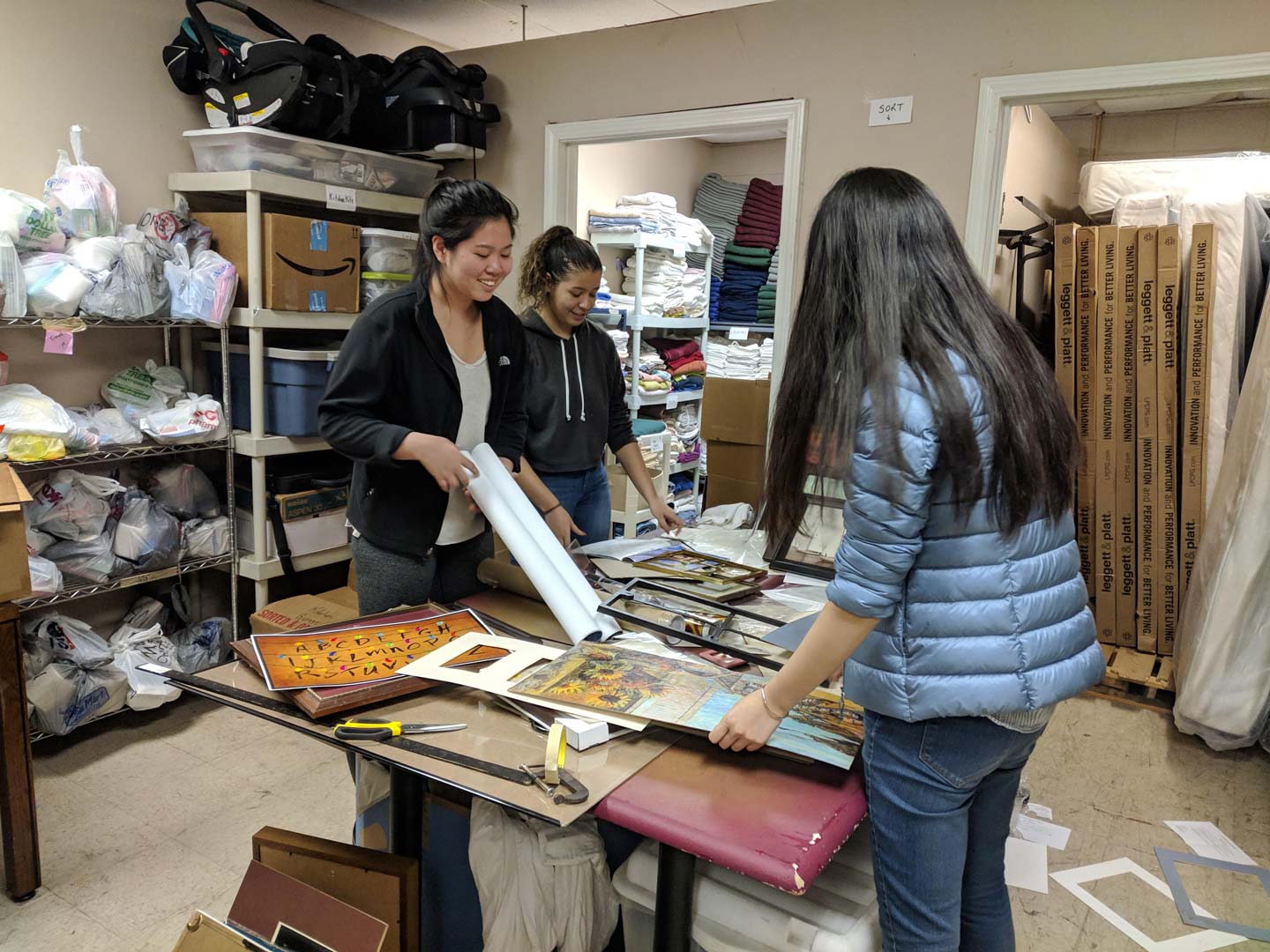Travel. Work. Make a Difference.
By Bryan Hay, Katie Neitz, and Kathleen Parrish
Lafayette students don’t stop learning when classes are on break.
Alternative School Break (ASB) Club enables students to participate in community-based service projects over the course of five to 10 days during winter interim and spring break. Each project is defined by a community-service initiative that makes an immediate positive impact. But the ultimate goal is to spark a lifelong interest in active citizenship.
Since ASB began at Lafayette in 1993, students have traveled internationally and to at least 17 states. Projects have included providing communities with clean water, assisting with hunger relief services, and rebuilding homes damaged by natural disasters.
Amber Zuber, director of leadership and service programs at Landis Center for Community Engagement, oversees the program and assists with travel logistics, but the programming is student-driven. Students apply to participate; it’s a selective process.
“This is an opt-in situation,” Zuber says. “Students who want to do this are really passionate and committed. We receive very positive feedback about our students from our community partners.”
Some experiences are challenging. Students are taken outside their comfort zones. Which is one reason daily reflections are part of the program. Teams reflect on their days and process how their experiences may inform their thoughts and actions in the future.
“It’s such a positive transformative experience,” Zuber says. “The students get this fire inside them. It’s our hope that they take that with them when they leave here.”
Here is an overview of the three January 2019 ASB trips. Three more will take place in March.
 The trip: “Foundations for the Future”
The trip: “Foundations for the Future”
The destination: Charleston, S.C.
The goals: Learn about urban housing disparities; complete a community service project with Habitat for Humanity; experience the culture and community of a location; ultimately, inspire students to do additional service work in their own backyards.
The team: Corey Beck ’22, Danielle Bellefeuille ’20, Jafar Bhatti ’19, Sophie Carr ’21, Danielle Devonish ’20, Danielle Gardner ’20, Ella Goodwin ’20, Zoey Hofmann ’22, Carly Jones ’21, Stefano Mancini ’22, Isabel Peck ’20
The leader: Psychology major Bellefeuille pitched this ASB with her application to lead a team. “I wanted to learn more about housing issues and disparities across neighborhoods,” she says.
The inspiration: “When you visit a city, you are drawn to the touristy areas,” Bellefeuille says. “But those areas don’t give you the full true picture of a community. I thought it would be good to have a chance to learn more about that while also working with Habitat for Humanity on a construction project.”
Not a tourist: Bellefeuille had traveled to Charleston before, but like most visitors, she only roamed within the downtown historic district. Staying in a working-class neighborhood and having the opportunity to work closely with locals provided a very different and more authentic experience.
Rolling up their sleeves: Students were entrusted with the responsibility of laying the foundation for two houses. “The corners had to line up perfectly,” Bellefeuille says. “We were told that if something is off by a fraction of an inch, it would affect the final product and have to be torn down. It’s very precise.”
The impact: “We looked at the brick walls of the church where we were staying with a whole new appreciation,” Bellefeuille says. “We now see how long it takes to build infrastructure and the skills involved. There can be a stigma about manual labor and a tendency to think that everything is done with technology. We are so more appreciative of the craft and the skills of the people who do it.”
Southern hospitality: Experiencing the local culture is part of the ASB experience. Students have a limited budget (by design) so they need to be resourceful. Most evenings dinner was a home-cooked meal prepared by Beck. On their cultural night out, they went to a counter-service kitchen recommended by the construction crew. “It probably wouldn’t have been a place we would have gone to as traditional tourists,” Bellefeuille says. “It was a great experience. The food was so good, and everyone there was so nice.”
Cultural awareness: Gardner discovered a free photography exhibit at a local college, aimed at showing different perspectives of what it means to be southern. “The south has many stereotypes revolving around race and religion,” Bellefeuille says. “We learned that there is a push for change, and there are different groups that are working for better representation.”
The unexpected gain: Mindfulness. At the construction site, students had trowels in hand—not phones. “It was amazing to be focused on the task in front of us and feel present,” Bellefeuille says. “It made us realize how much time we spend on our phones at home.”
New perspective: “This will inspire me to step out of my comfort zone and make an effort to explore different areas of a travel destination to get a fuller picture of what the place is actually like.”
 The trip: “The Present Is Female”
The trip: “The Present Is Female”
The destination: Honduras
The goal: To help 30 young women who are students at The Leadership Center (TLC) practice their English and teach them about stress management and mental health. TLC is a nonprofit in Los Valles Zambrano that works to educate and empower young women to become leaders in the community.
The team: Brenda Badillo ’19, Ayleen Correa ’19, Fanessa de la Rosa ’19, Fayola Fair ’19, Mailinda Hoxha ’19, Ana Ramirez Luhrs ’19, Lauren Mathisen ’19, Claire Meehan ’21, Alexandra Munro ’20, Angie Orellana ’20, Samantha Soulias ’19, Alexis Steffaro ’21, Yue Wu ’20
The leaders: Engineering studies and international affairs double major de la Rosa and Correa, an economics and international affairs double major
The inspiration: While interning at TLC last summer, de la Rosa learned that many of the women had difficulty balancing their studies with family obligations. De la Rosa, who is of Puerto Rican descent, explained there’s a stigma in Latinx culture about discussing mental health issues. “You can say you’re stressed, but you keep pushing forward,” she says. It was important for her to let the women know that it’s OK to express that you’re struggling and to make time for self-care.
But first … Students pitched in with morning chores each day. The women are tasked with maintaining the campus in exchange for free tuition. Every morning from 7:30–9 a.m. they clean the chicken coops, feed and wash the pigs, tend the vegetable garden, chop wood, clear brush, and work the coffee farm.
The takeaway: De la Rosa says she admired the women’s incredible work ethic. Every morning they’d get up at 5:45 a.m. to exercise before performing manual labor for 90 minutes. They greeted each challenge with a positive attitude and expressed sincere appreciation for the opportunities afforded to them by the center. They also excelled in time management and squeezed every minute from a day. Seeing the women persevere and work to transcend poverty so they can better the lives of others was inspiring to the Lafayette team.
Leadership lessons: There’s not one model of leadership, and it’s OK to find your own style even though it may look different from traditional forms.
How do the women at TLC become leaders? Through the strength of sisterhood. It’s difficult to be away from your family and not have connections, so they draw power and confidence from each other. Female leadership is about taking care of each other as opposed to taking charge.
The impact: It brought the team together. The type of conversations and group dynamics exhibited by ASB students when they arrived in Honduras were much different from when they departed. Cliques dissolved and personal problems slid into perspective, replaced by a keen appreciation for their Honduran mentors.
 The trip: “Si, Se Puede” (yes we can)
The trip: “Si, Se Puede” (yes we can)
The destination: New Orleans
The goals: To help destigmatize the elderly and ill in a city still feeling the wounds of Hurricane Katrina. Students worked with nonprofits that assist primarily the homeless, individuals with HIV/AIDS, and the aging.
The team: Rachel Bram ’20, Theresa Dao ’20, Lindsey Holek ’19, Blossom Jiang ’19, Min Liang ’20, Sorawit Roongruengratanakul ’22, Elbert Savinon ’20, Yoksaidy Sutil ’19, Liza Welch ’19, Kefei Wu ’20
The leaders: Jiang, a biology major, and Savinon, a chemical and biomolecular engineering major
The project: Students worked with UNITY of Greater New Orleans, Project Lazarus, and Belle Reve, organizing and cleaning rooms and food pantries and making kits of linens, kitchen supplies, and toiletries for distribution to people in need. “We learned about the statistics of the population as well as how difficult it is to truly recognize those in need as the economy was not improving but properties were becoming more expensive,” Jiang says. “We also learned how the effects of Katrina were still in effect, but overall, we also learned how the stigmas of HIV/AIDS and homelessness are still very present even till this day,” she adds.
The inspiration: Jiang was motivated to join and lead the trip from what she learned in an aging studies course about how people perceive age and the elderly. “In addition to that course, I wanted to bring perspective to how stereotypes and stigmas don’t go away and how they can be enhanced or wrongfully believed,” she says.
The impact: The trip produced what will likely become strong memories, particularly the students’ experience at UNITY of Greater New Orleans, which provides housing and services to the homeless. “While throughout the trip there we many moments, this moment felt the most memorable due to just the overall happiness everyone felt knowing we were helping those less fortunate and working efficiently while having a good time,” Jiang says.